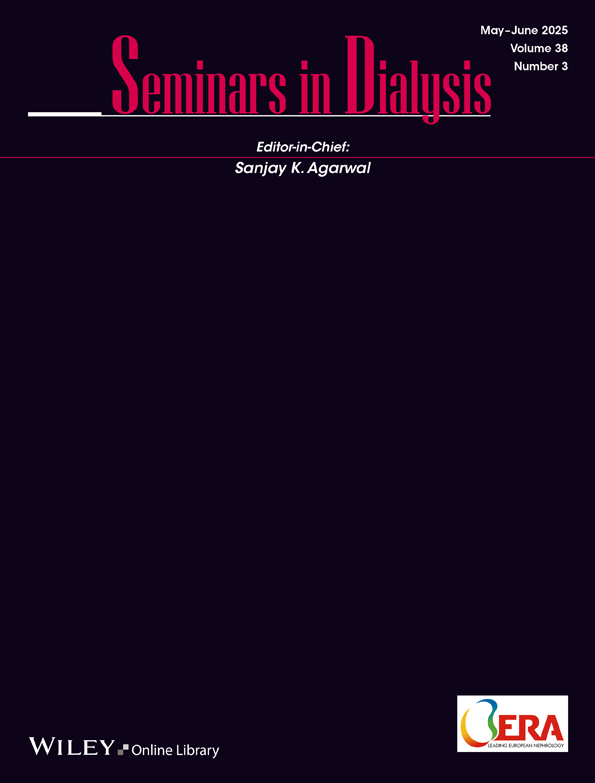Comparison of the Effects of Hemodialysis and Peritoneal Dialysis on Exhaled Nitric Oxide in Renal Replacement Therapy
Funding: The authors received no specific funding for this work.
ABSTRACT
Background
Peritoneal dialysis (PD) and hemodialysis (HD) form the basis of renal replacement therapy (RRT) in patients with end-stage renal disease. Both methods have advantages, and in our study, we aimed to examine the effect of both methods on exhaled nitric oxide (FeNO) levels.
Methods
Our study included RRT patients between 18 and 65 who our hospital's nephrology clinic followed up for at least 2 years. A total of 100 patients, 35 patients from both RRT groups and 30 healthy control groups, were included in our study. Echocardiography (ECHO) and FeNO measurements were performed.
Results
In the comparison of the groups' mean pulmonary arterial pressure (PAP) and pre-RRT FeNO levels, it was observed that both levels were higher in HD patients compared to PD patients (p = 0.04, < 0.001, respectively). The control group observed that both predialysis and postdialysis FeNO levels in HD patients showed a statistically significant difference compared to the control group (p ≤ 0.001, 0.01, respectively). It was observed that mean arterial pressure (MAP) levels were higher in HD patients compared to PD patients before RRT (p = 0.01). FeNO positively correlated with age and gamma-glutamyl transferase (GGT) level (R = 0.542, p = 0.01, R = 0.629, p = 0.01, respectively).
Conclusion
FeNO is known as an essential indicator of oxidative stress and inflammation. The higher FeNO level in HD patients compared to PD and its positive correlation with oxidative stress markers such as GGT suggest that PD may be more suitable for the physiological structure.
Conflicts of Interest
The authors declare no conflicts of interest.
Open Research
Data Availability Statement
The data that support the findings of this study are available from the corresponding author upon reasonable request.




